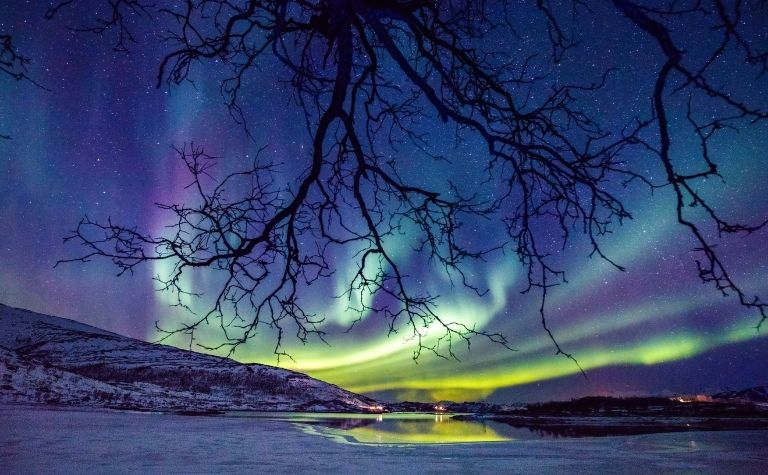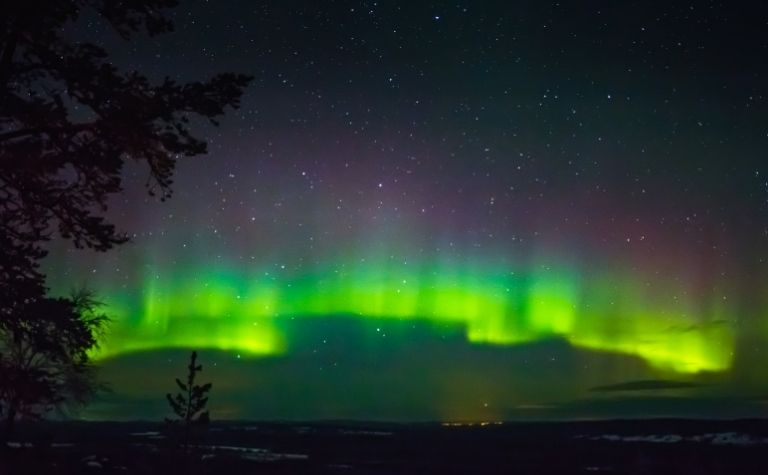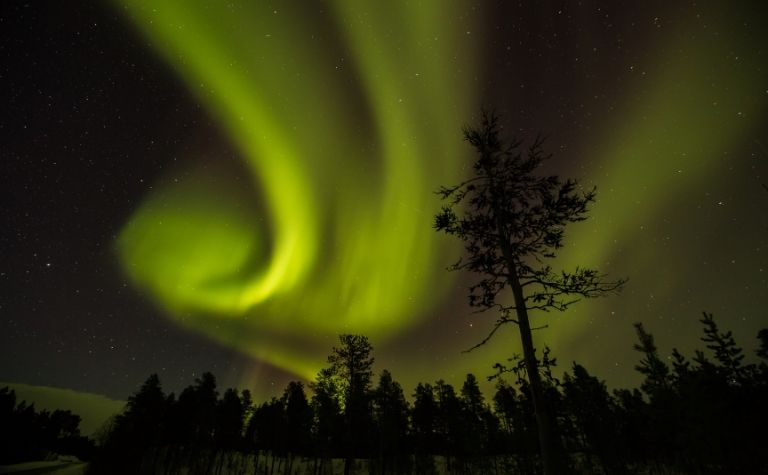The Northern Lights or ‘Aurora Borealis’ are one of the major tourist attractions in Iceland.
However, everyone who visits is not guaranteed to always see the lights as they are only visible under certain conditions.
Hence, many astronomy enthusiasts are always curious about the most opportune time to see the Northern Lights in Iceland.
Winter is the most favorable season to see the Northern Lights in Iceland. However, the celestial phenomenon is usually unpredictable.
The Northern lights are mostly visible from September to March on the darkest night hours when the skies are crisp and clear.
The remainder of this article will discuss the occurrence of the Northern Lights in Iceland.
It will also cover the best season (or time) and location to see the Northern Lights in the country.
Also, see Why Do Some Icelandic People Look Asian? to learn more.

In Season, Do the Northern Lights Appear Every Night?
The northern lights, a phenomenon resulting from electrically charged particles, are always in the atmosphere at any given moment.
The Northern Lights Centre in Canada reveals that ‘Aurora Borealis’ occur simultaneously as the ‘Aurora Australis’ (Southern Lights). [1]
However, despite occurring regularly, they are only visible at specific times of the year and at a specific time.
So, in which season do the Northern lights appear every night?
Scientific evidence shows that Aurora Borealis is brightest and more frequent during the auroral peak activity.
This auroral activity is a cyclic period of the highest solar activity, also known as the “solar maximum,” which peaks every 11 years.
During solar maximum, there are many sunspots that appear on the sun’s surface, and these sunspots are some of the main phenomena responsible for the Northern Lights. [2]
When in season, which is during the time of the Solar Maximum, the Northern lights are most likely to appear every night. Additionally, they are most evident on dark and clear winter nights.
The last solar maximum occurred in 2014 when the ‘Aurora Borealis’ appeared in a brightly colored array.
These colors result from a combination of the chemical constituents found in the earth’s atmosphere. They include atoms and molecules that absorb different sets of colors and radiate them.
There can be several sunspots during the solar maximum.
Their occurrence depends on the intensity of the sun’s activity. For instance, in 1958, researchers witnessed one of the most extraordinary auroral activities in the 20th century. [3]
One of the researchers acknowledged seeing the Northern Lights every night during their stay at Fairbanks, Alaska.
He revealed that there had been intense solar activity in the previous year, resulting in a solar maximum in February 1958.
Though auroras are evident at higher latitudes, people at lower latitudes may also spot them during the auroral peak activity.
Iceland is renowned for having some of the shortest day times during winter. In mid-winter, people experience around two to four hours of light.
According to the University of Alaska Fairbanks, Northern Lights appear during the dark and clear night skies of March in Iceland.
Hence, it’s possible (though not a guarantee) to witness the Northern Lights frequently in the month when the conditions allow.
Also, see Can You See Greenland from Iceland? to learn more.

Where in Iceland Is the Best Place To See the Northern Lights?
Iceland is a North Atlantic island lying in the Northern Hemisphere and on one of the ovals of auroral activity.
Due to the country’s location, one can spot the auroral activity which results from the explosion of energized particles in the earth’s atmosphere.
Regions at the North Pole experience this phenomenon as the earth’s magnetic field redirects these particles (solar wind) to the poles.
Though Iceland is a country within the oval of auroral activity, not all areas are ideal for spotting the Northern Lights.
However, the country’s natural scenery, including mountains, waterfalls, glacial lagoons, and crisp, clear skies, offers a perfect backdrop for the ‘Aurora Borealis.’
The best places to watch the Northern Lights are away from the cities where there’s minimal pollution and interference.
Pingvellir National Park, Jökulsárlón, Reynisfjara Black Sand Beach, Seljavallalaug, Laugardalur, Akureyri, and Grótta are some of the most popular locations for viewing them.
Here is a bit more detail about each of these locations:
- Þingvellir National Park – A short distance from Reykjavik, the country’s capital, Þingvellir National Park is one of the finest places to watch ‘Aurora Borealis.’ It is a vast area with clear skies, providing a perfect backdrop for the Northern Lights.
- Jökulsárlón – Situated in the Southeast part of Iceland, Jökulsárlón is a glacial lagoon that offers a picturesque view of the Northern Lights. The lagoon absorbs the red and green glow of the lights, creating a prismatic effect.
- Reynisfjara Black Sand Beach – Located near the southern town of Vík, Reynisfjara is a popular black sand beach with basalt columns. The site offers a spectacular view of ‘Aurora Borealis’ amidst the musical waves.
- Seljavallalaug – This outdoor swimming pool is situated between Reykjavik and Vík. The hot spring offers a cozy site to watch the Northern Lights.
- Laugardalur – A few kilometers from Reykjavik, Laugardalur is a sports hub where locals enjoy hiking trails and ice rinks. It’s a perfect spot to see the Northern Lights as it has minimal light pollution and offers an outdoor thermal tub.
- Akureyri – The northern port city is another ideal location to watch ‘Aurora Borealis.’ Akureyri has little light interference, and the surrounding mountain peaks offer a splendid backdrop.
- Grótta – Though it is a bird-watching site, Grótta is a perfect spot to watch the Northern Lights. It is away from the city; hence, it has minimal light intrusion.
Also, see Is Greenland Part of Denmark? to learn more.

Are People Guaranteed To See the Lights in Season?
Seeing the Northern Lights is one of the primary reasons why tourists visit Iceland.
The locals also treasure the sight of these breathtaking lights and flock to the best locations to watch ‘Aurora Borealis.’
While there’s no 100% guarantee, there’s an extremely high probability of seeing the Northern Lights in Iceland from September to March (or mid-April) when the nights are longer.
However, the highest chances of spotting the lights are between October and March, from 11 p.m. to 2 a.m.
Location is another factor that increases the chances of seeing the Northern Lights. Areas with minimal artificial light interference provide the best spots to watch the lights.
Therefore, it is recommended to move away from the city where the skies are clearer.
Conclusion
The Northern Lights have been an intriguing phenomenon since the Middle Ages. The best time to see them in Iceland is between October and March.
